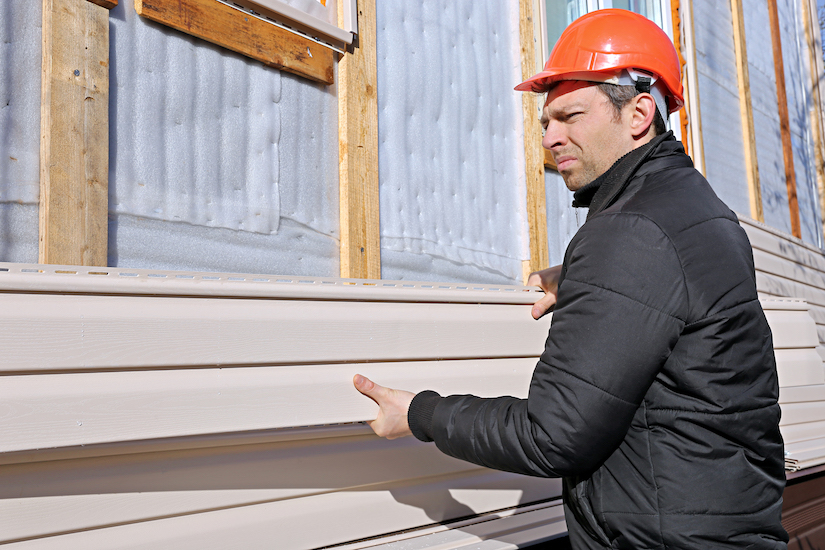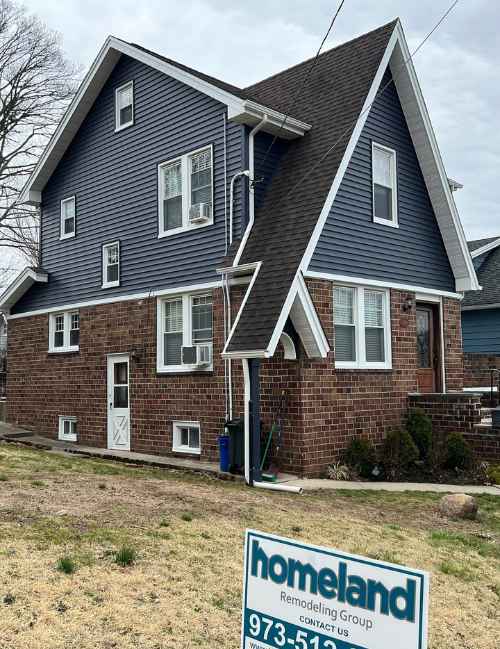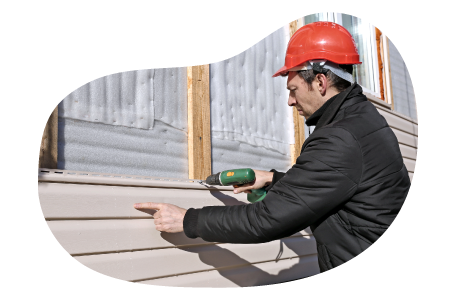The Essential Overview to the Different Sorts Of Home Siding and Their Distinct Advantages
In the world of home renovation, choosing the best siding is an essential decision that influences both aesthetic allure and useful efficiency. With so many choices to consider, which siding material truly stands out for your details task?
Timber Exterior Siding
Wood home siding, a popular selection for residential exteriors, supplies a timeless aesthetic that combines all-natural beauty with structural stability. This exterior siding product is readily available in different styles, consisting of clapboard, roof shingles, and board-and-batten, permitting home owners to personalize their façade to match their layout preferences. Wood home siding is usually crafted from long lasting types such as cedar, redwood, or want, which are understood for their resilience and capacity to endure environmental stressors.
Among the primary benefits of timber home siding is its superb insulation residential or commercial properties, which can add to energy effectiveness and reduced heating expenses. Furthermore, timber home siding is naturally degradable, making it an ecologically friendly choice when sourced sustainably. Routine maintenance, including paint or staining, can prolong its lifespan and enhance its appearance, allowing home owners to protect the all-natural beauty of the timber.
Nonetheless, possible downsides include vulnerability to bugs, rot, and weather condition damages, requiring sufficient treatment and upkeep - morris siding contractor. In spite of these problems, when appropriately taken care of, wood siding can offer a beautiful and sturdy solution that boosts the character of a home while offering a cozy, inviting ambience

Plastic Siding
Vinyl home siding has become a leading option for homeowners looking for a low-maintenance outside choice that integrates sturdiness and price. This flexible product is crafted from polyvinyl chloride (PVC), making it immune to numerous climate condition, consisting of moisture and UV rays. Consequently, plastic home siding does not warp, rot, or fade, ensuring lasting visual allure.
One of the key benefits of plastic siding is its comprehensive series of styles and colors, enabling property owners to accomplish the preferred search for their property without the need for constant repainting. In addition, vinyl home siding is simple to mount, which can significantly decrease labor prices during building and construction or restoration projects.
Plastic exterior siding also adds to power performance. Many options feature insulation support, which improves thermal performance, assisting to maintain comfy indoor temperatures and potentially reducing power bills. In addition, its smooth surface assists in very easy cleaning, calling for just regular washing with a garden pipe to remove dust and particles.
Fiber Concrete Exterior Siding
Fiber cement home siding has actually gained grip among homeowners and contractors alike as a result of its remarkable combination of longevity and aesthetic convenience. Composed of a blend of concrete, cellulose, and sand fibers, this home siding choice is crafted to withstand extreme climate condition, including high winds, hefty rain, and temperature level variations, making it a durable option for residential outsides.

Among the main advantages of fiber cement exterior siding is its resistance to parasites, such as termites, and its non-combustible nature, offering improved fire security. morris siding contractor. Additionally, it is offered in a large array of styles, colors, and textures, allowing home owners to accomplish their desired aesthetic without compromising performance
Another benefit is its low maintenance needs; fiber concrete house siding usually requires paint Discover More or discoloration every 5-10 years, which is much less frequent than various other materials. Its longevity adds to a lower overall price of ownership, as it decreases the need for frequent repair services or substitutes.
Ultimately, fiber concrete exterior siding stands for a superb financial investment for those seeking a resilient, eye-catching, and functional outside alternative, incorporating both type and feature to improve the home's aesthetic allure.
Metal Home Siding
The appeal of metal exterior siding exists in its durable sturdiness and modern visual allure, making it a popular choice for modern style. Offered in materials such as light weight aluminum and steel, metal house siding provides a variety of colors and surfaces, allowing homeowners to accomplish a personalized appearance that complements their style vision.

Power efficiency is one more considerable benefit, as several steel house siding items are developed with insulation choices that assist manage indoor temperatures. This can cause lowered energy prices with time. Furthermore, steel house siding is usually recyclable, making it an ecologically friendly selection for sustainability-minded property owners.
The installation procedure for steel house siding can be relatively simple, causing next page a quicker turnaround time for building and construction tasks. On the whole, metal siding integrates functionality and design, making it a useful option for those looking for a aesthetically enticing and enduring outside surface.
Block and Stone Home Siding
Brick and stone house siding attracts attention as a timeless choice that boosts the check over here visual beauty of any type of home. Understood for their toughness and reduced maintenance, these materials offer an exceptional roi while boosting the residential property's aesthetic allure. Offered in numerous shades, structures, and patterns, brick and stone can be tailored to suit varied building styles, from standard to modern.
Among the key advantages of brick and stone siding is their energy effectiveness. Both materials have natural protecting residential or commercial properties that help control indoor temperature levels, potentially lowering heating & cooling expenses. Additionally, they use premium fire resistance contrasted to various other exterior siding choices, contributing to improved security.
An additional advantage is their long life. Brick and rock can last for decades, typically requiring marginal upkeep past occasional cleansing. Unlike wood home siding, they are impervious to insects and rot, making certain a lasting outside that holds up against the components.
Final Thought
In recap, the selection of home siding dramatically influences a home's visual allure, power efficiency, and upkeep demands. Each sort of siding-- whether timber, plastic, fiber concrete, block, or metal and stone-- uses unique advantages tailored to various homeowner choices and environmental conditions. Recognizing these options enables informed choices that improve both the longevity and visual beauty of domestic exteriors. Inevitably, selecting the right exterior siding is vital for achieving an equilibrium between performance and layout in domestic style.
One of the primary advantages of timber house siding is its superb insulation residential or commercial properties, which can add to energy effectiveness and reduced heating costs. Furthermore, wood exterior siding is biodegradable, making it an eco friendly choice when sourced sustainably.One of the main advantages of metal exterior siding is its resistance to numerous environmental elements.Energy effectiveness is one more significant advantage, as many steel house siding products are made with insulation options that help manage interior temperatures. Each type of exterior siding-- whether wood, vinyl, fiber metal, concrete, or brick and stone-- supplies unique advantages customized to different home owner preferences and environmental problems.